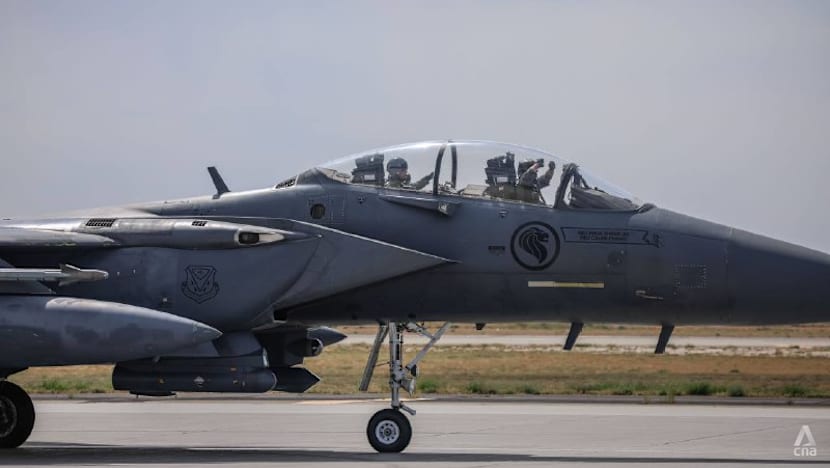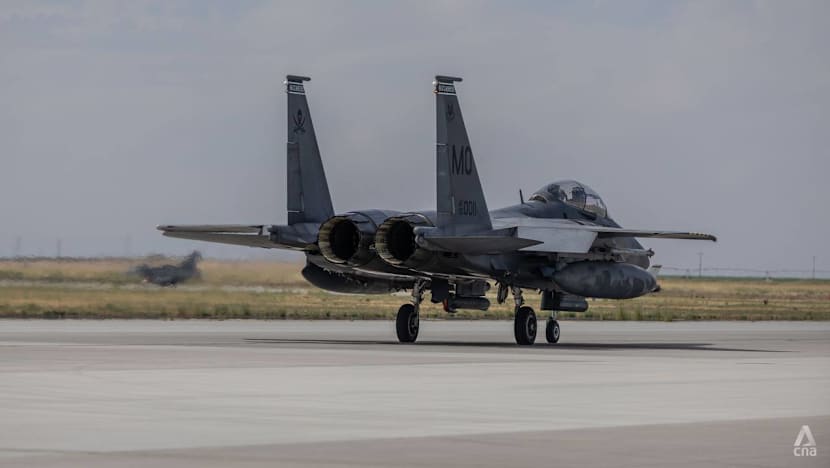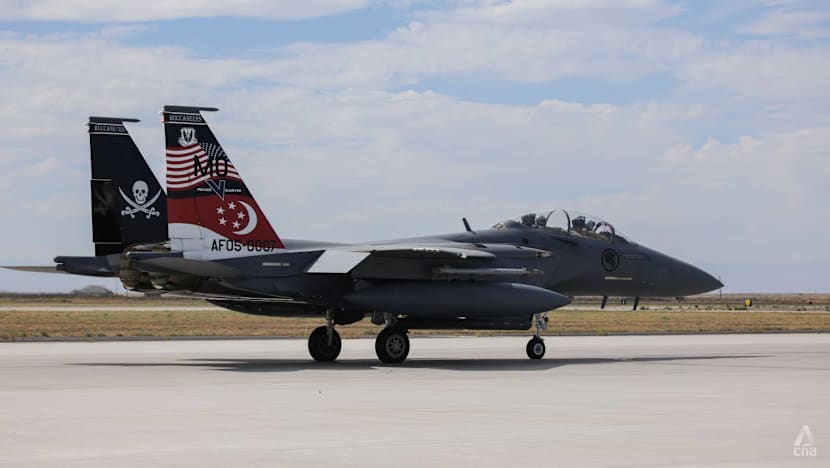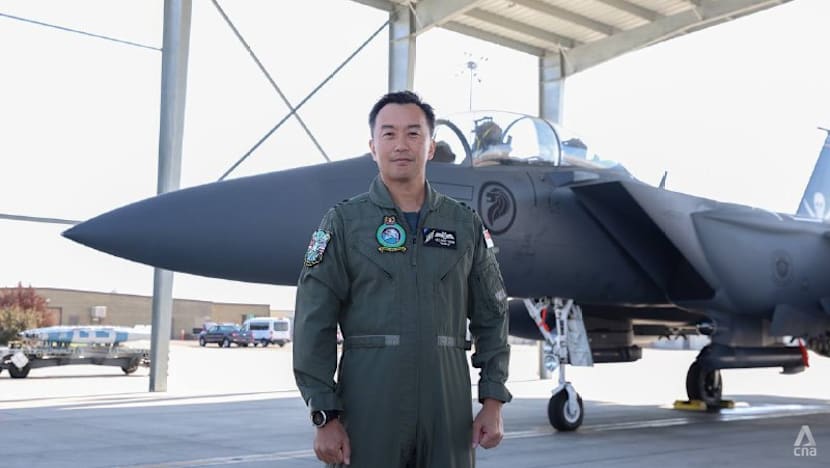Micro-unmanned aerial systems, off-the-shelf drones to feature in Singapore Armed Forces exercise in US
The number of drones in this year's Exercise Forging Sabre has more than doubled from the previous edition in 2023.

Skydio drones and upgraded F-16 fighter jets among assets participating in the Singapore Armed Forces' Exercise Forging Sabre 2025. (Photos: Skydio, CNA/Ili Mansor)

This audio is generated by an AI tool.
IDAHO, United States: A range of unmanned aerial systems and vehicles will feature more heavily at the latest edition of the Singapore Armed Forces' (SAF) Exercise Forging Sabre.
The 10th iteration of the biennial military drill kicked off on Sep 6 and will run until Sep 21 at the Mountain Home Air Force Base in Idaho state in the US.
Here, the SAF will conduct large-scale and realistic training at an airspace more than 20 times the size of Singapore, the Ministry of Defence (MINDEF) said on Tuesday (Sep 9).
More than 800 personnel from across the SAF and defence technology community will be participating.
Exercise Forging Sabre has provided the SAF the opportunity to validate and experiment with strike capabilities and different operational concepts of operations since the inaugural edition in 2005.
This year, 24 drones - including commercial ones manufactured by the likes of Skydio - will be involved, more than double the 11 in the 2023 exercise.
The Republic of Singapore Air Force (RSAF) will introduce a variety of micro or mini-unmanned aerial systems (UAS) for surveillance operations, said MINDEF.
A newly established unit under the air force's UAS Warfare and Tactics Centre will trial small off-the-shelf drones.
Known as Drone Rapid Operationalisation, Integration and Deployment or DROID, it researches, experiments and trials small unmanned aerial vehicles (UAVs) for SAF operations.
Other assets that will be involved in the exercise include 12 F-15SG, nine upgraded F-16 fighter jets, four AH-64D Apache helicopters, three Heron 1 UAVs and an A330 Multi-Role Tanker Transport (MRTT).



ORCHESTRATING PRECISION STRIKES
Speaking to reporters at the Mountain Home Air Force Base, exercise director Brigadier-General Teo Soo Yeow linked the increased involvement of drones at this year's exercise to the need to learn from recent conflicts, including Ukraine-Russia and Israel-Iran.
"The use of drones actually can expand our toolkits, and it gives us a lot more options to orchestrate precision strikes more timely and more accurately," he said.
They also offer greater redundancy - an approach where additional systems take over in the event of a failure, thus reducing dependency on a single system to work all the time.
But drones will not be able to completely replace manned platforms today, said BG Teo, pointing to the Israel-Iran conflict which he said illustrated that manned platforms still have a lot of "heavy lifting" to do.
He also cited GPS and communications jamming as key lessons picked up from the conflicts. The former involves the drowning out of transmissions from Global Positioning System satellites, while the latter is where wireless communications are deliberately blocked or interfered with.
"You cannot train like you will never be disrupted," BG Teo added.

He was also asked about SAF recruits now being taught to fly and counter drones as part of their Basic Military Training (BMT).
BG Teo said that Exercise Forging Sabre is where drones are put into a more operational context. In the lead-up, drone operators are taught to fly them in different scenarios so they can complement integrated strike operations. They will also be able to communicate with and take instructions from a command post.
This command post is unique to Exercise Forging Sabre, and was referred to by BG Teo as the "brain". With the command post, exercise participants can take in dynamic developments during simulated air campaigns, and make real-time decisions to effect changes on plans.
LIKE A RIDE-HAILING APP
A more advanced command and control information system (CCIS), with increased automation and smarter decision-making modules, will also be deployed at this year's Exercise Forging Sabre.
One of the improvements include an advanced combat management system, deployed at the command post. Lieutenant-Colonel Lim Swee Ann from the UAS Warfare and Tactics Centre likened this to a ride-hailing app, as it can provide on-demand UAV services at any given time.
It considers the positioning of all UAVs, mission locations as well as planning requirements such as how long a UAV is needed for and where it should be - before recommending solutions for warfighters and commanders, said LTC Lim, who is the head of concept of operations and tactics.
This has improved efficiency in a process which could at times take hours in the past.
Elsewhere, making its debut at Forging Sabre is the RSAF Agile Innovation Digital (RAID), a military start-up within the air force.
Military Expert 5 Rizvan Jacob, a software developer, said this entity arose from a need for the RSAF to better respond to changing operational requirements in the modern battlefield.
RAID helps design and develop changes to software for RSAF personnel to adapt quickly to uncertain and dynamic situations.

"This can look like new sources of data that our warfighters might want to use, or new platforms that our warfighters might want to incorporate into the CCIS," said ME5 Rizvan.
The SAF’s fourth branch, the Digital and Intelligence Service (DIS), will also support RSAF’s operations by analysing threats and providing intelligence support.
DIS' participation in Exercise Forging Sabre illustrates how its strong partnership with the air force "enhances strike operations through improved overall battlefield situational awareness", said MINDEF.
The ministry added that the exercise will also demonstrate how the SAF stays "resilient against countermeasures such as electronic warfare. to continue operations despite being in contested and degraded environments".















